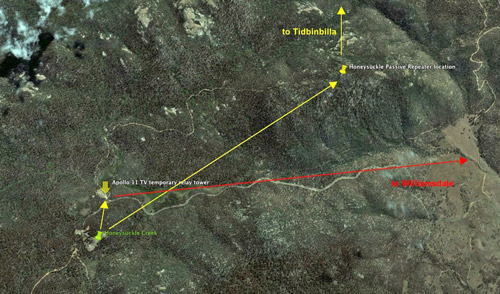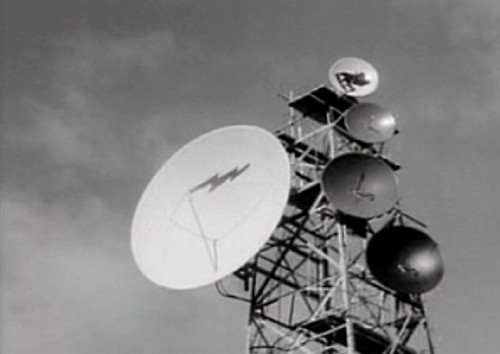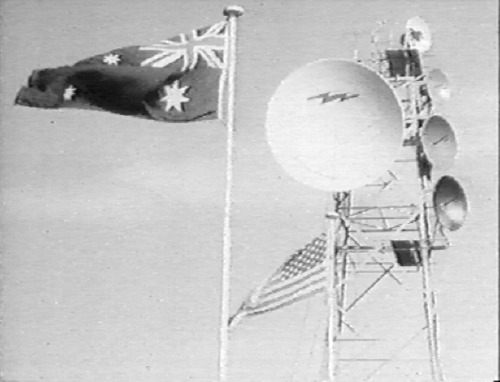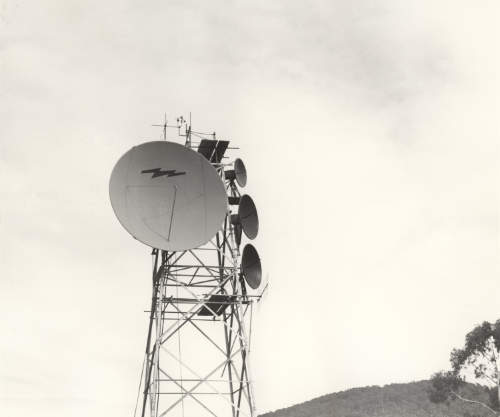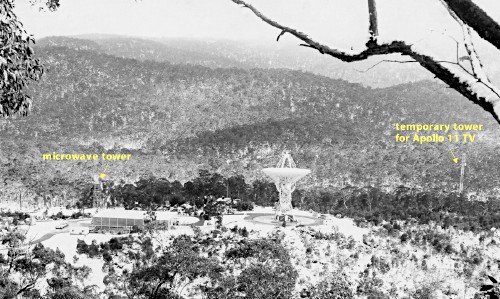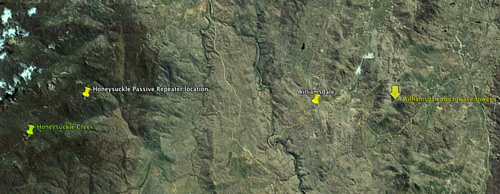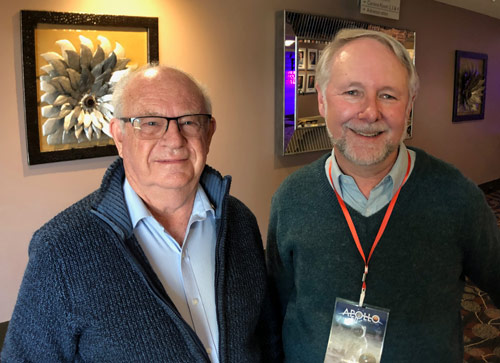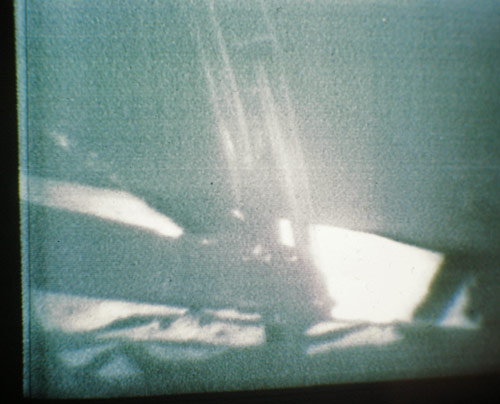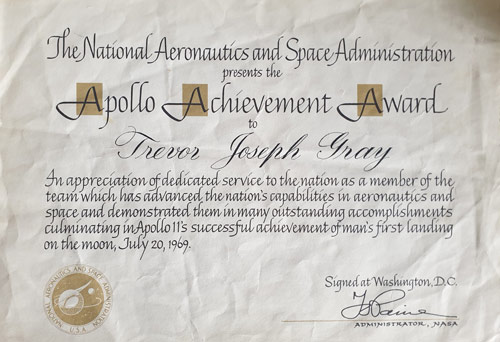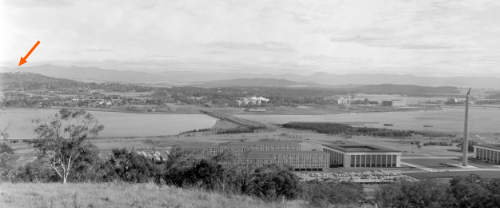The Television pictures of the Apollo 11 Moonwalk were relayed from Honeysuckle Creek to Canberra using a temporary microwave link.
While there was a microwave link (for voice and telemetry) from Honeysuckle Creek to Tidbinbilla via the passive repeater on Deadman’s Hill, there was no capability to send live television out of the station and to the rest of the world.
So, for example, during Apollo 8, while live TV from lunar orbit was watched in station, the world saw the TV via Goldstone and Madrid.
|
The large dish on the Honeysuckle microwave tower was directed towards the passive repeater on Deadman’s Hill. This provided the link to the Wing (HSKX) at Tidbinbilla.
The smaller dishes added to the tower for Apollo 11 (see below) were directed at the temporary tower next to the road. This tower had a line of site to Williamsdale.
Base: Google Earth. |
Shortly before Apollo 10, NASA planners worked on finding a way to connect Honeysuckle Creek to the Cooma to Canberra microwave radio link. The nearest of those repeater towers was on Gibraltar Hill, 4km east of the hamlet of Williamsdale, approximately 18km east of Honeysuckle Creek.
Honeysuckle was shielded by hills, which also meant that a line of sight link from the station to Williamdale would not be possible. However, a point 170 feet (50 metres) above ground level, and 470 metres ENE of the Honeysuckle microwave tower could see the Williamsdale tower.
The PMG (The Australian Postmaster General’s Department) erected a 170 foot temporary guyed tower, and a passive repeater (two dishes connected by a waveguide) was installed at the top.
|
The location of the temporary TV tower is marked on this image derived from Google Earth. It was next to the road, less than a kilometre from the station’s front gate. Signals from Honeysuckle’s microwave tower were beamed through the passive repeater on the temporary tower and on to Williamsdale.
|
|
The location of the temporary TV tower is still a cleared area. John Saxon inspects it in this March 2009 photo by Betty Saxon. |
Four smaller microwave dishes were installed on Honeysuckle’s microwave tower, right next to the Operation Building.
|
Mike Dinn remembers: “Two dishes were for Parkes (via Sydney) incoming – prime and backup. The other pair for outgoing TV, prime and backup.”
Screenshot from ABC footage taken on the morning of the Moonwalk. Used with permission. |
|
And another view, taken from the top end of the car park, in the direction of the dish. From ABC footage shot about a week before the landing.
|
|
Here’s a side view of the dishes – taken from an ABC TV report filmed shortly before the mission. Used with permission. |
|
This photo, preserved by Ian Grant, has the tower without the etxra ABC-TV outside-broadcast backup dish on the top platform. |
|
This photo is one of only three we’ve seen of the tower. It was taken by Hamish Lindsay from the water tank in 1969, probably not long after Apollo 11.
Click image for a larger version, or here for detail. |
PMG Senior Technician Trevor Gray was based at Honeysuckle for the Moonwalk, and monitored the outgoing video.
At Williamsdale, 18km away, an Outside Broadcast van belonging to AWA (Amalgamated Wireless Australasia) was stationed at the base of the Cooma to Canberra microwave tower. The van remained in place, in bitterly cold weather, for the duration of the mission. The Williamsdale microwave tower’s diesel backup power supply was kept running throughout the mission in case the mains power failed. (Bruce Ekert recalls that similar precautions were taken throughout the microwave network which carried Apollo 11 signals.)
Once the TV signal was inserted into the link, it was sent the 27 kilometres to Red Hill in Canberra, where PMG technician Bruce Ekert was monitoring the signal. PMG technician’s assistant Bob McFadden also helped with the link and with the extensive testing beforehand.
|
The Williamsdale microwave tower still stands on a high hill to the east of the hamlet of Williamsdale. Base: Google Earth. |
From Red Hill the TV was sent via microwave link to Sydney – and from there to Moree and via Intelsat III F4 to Houston.
|
Trevor Gray with Colin Mackellar at the Apollo 11 50th anniversary event in Canberra, July 2019. Photo: Steve Howard. |
PMG Senior Technician Trevor Gray recalls,
“I was a Senior Technician, Radiocommunications Installation, PMG, at the time of Apollo 11.
I had a small team and travelled around NSW installing Radio Communications equipment including Microwave, UHF multichannel, Single channel phone systems, and mobile radio. Red Hill was Canberra’s Radio Terminal and was our base when in the area. I had done a lot of work in the Canberra area, including the installation of all the equipment at Williamsdale, a repeater on the Canberra to Cooma Microwave system.
Maintenance and operations at Red Hill and Williamsdale was the responsibility of rostered staff from Central exchange, East Block. Central Exchange was Canberra’s Trunk Exchange. (Basically everything that wasn’t part of the local switched telephone network). They were backed up by Radio specialists at Redfern Radio terminal in Sydney.
Central Exchange had a lot to do with the Nascom network, but probably not much to do with the television because we, the installation team stayed for the mission and didn't hand it over to operations.
It is a pity that I didn’t fully grasp the historical significance of the event and kept more detail of the equipment arrangement etc. Maybe being 27 yrs of age has something to do with that. I have only my memory which tends to remember challenges, hassles etc., but not so much the things that fall into place and run smoothly. But first step on the Moon I’ll always remember.
I don't remember installing extra links between Williamsdale and Red Hill. There was a very reliable standby bearer on the existing Cooma to Red Hill 4.2 GHz NEC system in both directions. All that was required at Williamsdale was the installation of a Television Modem and some modifications at Red Hill to patch the signals to similar 4.2 GHz standby bearers to Redfern in Sydney (Magneti Marelli Equipment).
The equipment used on Williamsdale to Honeysuckle Creek was Outside Broadcast Equipment using klystron valves running around 7GHz. We attached the head units to larger than normal dishes which were tower mounted. I had never seen this equipment before, which is not unusual for installation people, but had a lot of experience with waveguides/dishes.
I remember using the lathe at Honeysuckle to machine a waveguide flange so that it would electrically mate with another flange (remove a choke). I had watched my brothers, who were fitters, operate a lathe. The alternative was to find a machinist, which takes time.
There were a few maintenance issues with the equipment. It was cold and wet and some connectors on cables carrying high voltage up the towers arced and broke down. After repairing them I remember encasing the joints in epoxy resin.
Some klystrons failed over time and I remember not having a klystron for a spare unit. I mentioned it to the storeman at Honeysuckle and he got American defense to fly one out overnight.
On the operations side, on the day, I was at Honeysuckle. I had waveform and picture monitors to check on the quality of the signals. At one point I noticed that the loading (voltage) of the composite signal from Parkes was getting too high, to a point where the links would have problems. I forget who I rang, but the levels were reduced.
Good to be part of it.
After installing the communication equipment at Black Mountain Tower, I joined the operations team there, and was OIC for a number of years. A few astronauts had morning tea with us there.
Trevor Gray, 27 October 2020.”
|
Trevor took these snaps of the outgoing picture on the monitor in Honeysuckle’s microwave tower wire room.
This one was taken just after the first step, at about 109:25:50 GET, as Neil Armstrong explains, “There seems to be no difficulty in moving around, as we suspected. It’s even perhaps easier than the simulations of one-sixth g that we performed in the various simulations on the ground”.
The world is seeing this Honeysuckle picture at this point.
Image processing: Colin Mackellar. |
|
At 109:38:05 GET, Armstrong moves from right to left from out of frame and into the sunlight, just as Bruce McCandless announces, “Here you come into our field of view”.
The world is seeing the Parkes picture at this point. |
|
Trevor Gray has shared this photo of his Apollo Achievement Award, in recognition of his part in ensuring the world saw Neil Armstrong’s first step onth the Moon. |
Bruce Ekert, who was based at Red Hill for the TV, was interviewed on 2nd June 2009 –
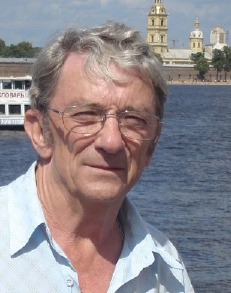
|
Bruce Ekert, PMG Tech
 Listen to a 13 minute interview Listen to a 13 minute interview
(4.3MB mp3 file) with PMG Electronics Communications Technician Bruce Ekert.
Bruce helped set up the microwave link from Honeysuckle Creek to Williamsdale to Red Hill. He manned the link at Red Hill during the Moonwalk. |
|
|
Red Hill microwave tower, above Canberra, probably late 1960s or 1970s. It was erected in 1955.
Bruce Ekert writes:
“The dishes are as follows –
The two dishes facing right are towards Sydney.
The two dishes facing away to right rear are to Mt. Burrinjuck near Yass ... to Melbourne.
The single dish facing left was the dish facing Williamsdale / Cooma. This is the dish which would have carried the video from Apollo11/HSK.”
Image source is unknown and was a poor copy. It’s been enhanced for clarity. |
|
Red Hill microwave tower (arrowed) is *just* visible in this 1965 photo taken by Les Whaley from Mount Pleasant Lookout behind Duntroon.
In the right foreground are the Russell Offices and the Australian-American Memorial which was opened by Queen Elizabeth II in February 1954.
Medium format negative scan by Colin Mackellar. |
Back to the main Apollo
11 TV page.
Back
to the main Apollo 11 mission page.
